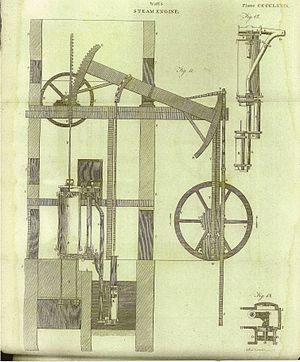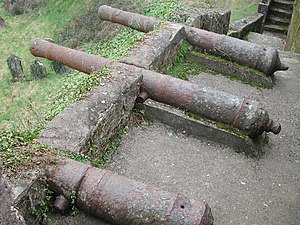John Wilkinson and the Importance of Cast Iron Foundries

John Wilkinson and the Importance of Cast Iron Foundries
Cast iron is a strong, durable, and versatile material that has been used for centuries in a wide range of applications. One of the key figures responsible for the widespread adoption of cast iron was John Wilkinson, an English industrialist and inventor who played a crucial role in the development of iron foundries and the production of cast iron.
In this article, we will explore the history of John Wilkinson and his contributions to the world of cast iron, as well as the importance of iron foundries and cast iron in modern times.
Who was John Wilkinson?
 John Wilkinson was born in 1728 in Cumberland, England. His father was a farmer, and Wilkinson initially intended to follow in his footsteps. However, he soon became interested in engineering and began working as an apprentice in a local ironworks.
John Wilkinson was born in 1728 in Cumberland, England. His father was a farmer, and Wilkinson initially intended to follow in his footsteps. However, he soon became interested in engineering and began working as an apprentice in a local ironworks.In the early 1750s, Wilkinson moved to Staffordshire, which was then a center of the iron industry in England. There, he began working as an iron founder and quickly gained a reputation for his skill and innovation. He was particularly interested in the production of cast iron, which was still a relatively new technology at the time.
Improving on Innovation
Wilkinson’s early innovations in the production of cast iron included the use of coke as a fuel, which allowed for more consistent and efficient melting of the iron. He also experimented with different types of molds and casting techniques, which helped to improve the quality of cast iron and make it more suitable for a wider range of applications.
Over the years, Wilkinson continued to develop new techniques and technologies for the production of cast iron. He also became involved in a wide range of other industries, including mining, canals, and steam engines.
Wilkinson’s Legacy in the Iron Industry
 One of Wilkinson’s most important contributions to the iron industry was his development of the boring machine. This machine allowed for more precise and efficient production of iron cylinders, which were used in a wide range of applications, including steam engines, water pumps, and printing presses.
One of Wilkinson’s most important contributions to the iron industry was his development of the boring machine. This machine allowed for more precise and efficient production of iron cylinders, which were used in a wide range of applications, including steam engines, water pumps, and printing presses.Wilkinson’s boring machine was a major breakthrough in the production of cast iron, as it allowed for the creation of larger and more complex castings than had been possible before. This, in turn, helped to spur the development of new industries and technologies, including the steam engine, which was a key driver of the Industrial Revolution.
In addition to his work on the boring machine, Wilkinson also played a key role in the development of iron foundries. His innovations in casting techniques and furnace design helped to make the production of cast iron more efficient and cost-effective, which helped to drive down the price of iron and make it more widely available.
The Importance of Cast Iron in Modern Times
Today, cast iron is still widely used in a variety of applications, from cookware and decorative objects to industrial machinery and construction materials. Cast iron is prized for its strength, durability, and versatility, and it remains one of the most important materials in the modern world.
One of the key advantages of cast iron is its ability to be molded into complex shapes and designs. This makes it ideal for a wide range of applications, from small decorative objects to large-scale industrial machinery.
Increased Durability
Cast iron is also highly resistant to wear and corrosion, which makes it ideal for use in harsh environments. It can withstand high temperatures and pressures without deforming or breaking, which makes it a popular material for use in engines and other machinery.
Another advantage of cast iron is its ability to absorb and retain heat. This makes it ideal for use in cookware, as it can heat up quickly and evenly and then retain that heat for an extended period of time. Cast iron cookware is prized by chefs and home cooks alike for its ability to create flavorful and evenly cooked dishes.

Uses for Cast Iron
John Wilkinson was a key figure in the development of cast iron foundries and the production of cast iron. His innovations in casting techniques, furnace design, and the development of the boring machine helped to revolutionize the iron industry and make cast iron a widely available and cost-effective material.
Today, cast iron remains an important material in a wide range of applications, from cookware and decorative objects to industrial machinery and construction materials. Its strength, durability, and versatility make it an ideal choice for a variety of uses, and its ability to withstand harsh environments and retain heat has helped to make it a popular choice for many different industries.
 Legacy and Innovation
Legacy and Innovation
Overall, the legacy of John Wilkinson and the importance of cast iron in modern times serve as a testament to the power of innovation and the enduring value of durable and reliable materials. Whether in the kitchen or in the factory, cast iron remains a crucial part of our modern world, thanks in no small part to the contributions of figures like Wilkinson.
Willman is proud of these innovators in the iron and steel industry. Without their contributions to these important industries, we would not have some of the things that we take for granted today. Our engineers, specialists, and technicians are inspired by their ingenuity and motivated to build on their success.
Call us today to find out how our dedication to excellence can benefit your company and your customers. Our knowledgeable staff and state-of-the-art facilities will provide the quality that you deserve!

